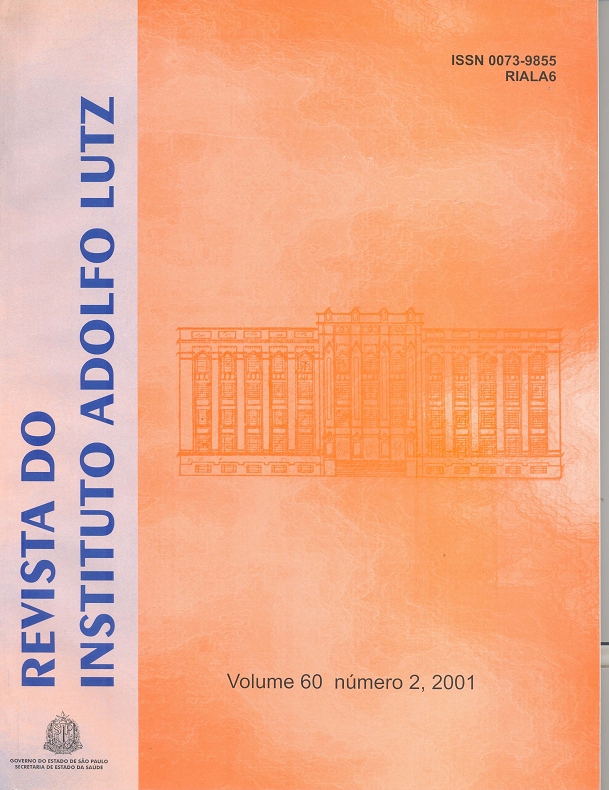Resumo
O objetivo deste trabalho foi determinar os níveis de resíduos de α-endosulfan,β-endosulfan e sulfato de endosulfan na vagem e no grão de soja. A soja foi cultivada em uma área de 900 m2, dividida em três parcelas iguais, sendo uma parcela reservada para a soja testemunha, sem aplicação de endosulfan, e as outras duas reservadas para pulverização deste inseticida por meio do sistema manejo integrado de pragas (MIP) e do sistema convencional. Os níveis de resíduos de endosulfan foram quantificados por cromatografia gasosa com detector de captura de elétrons (Ni63). Foram encontrados na vagem cerca de 6 e 7 vezes mais resíduos de endosulfan total do que no grão de soja, nos sistemas MIP e convencional, respectivamente. Em ambos os sistemas, não foram detectados a presença de sulfato de endosulfan dentro do limite de quantificação do método de 0,5 mg/kg para o grão de soja e 0,1 mg/kg para a vagem de soja. Em relação aos resultados obtidos conclui-se que a vagem apresentou um efeito protetor à penetração do inseticida no grão. Ambos os sistemas foram eficientes no combate às pragas, porém sugere-se o uso do MIP porque resultou em menor contaminação do grão. A soja estava adequada para consumo em relação à Legislação Brasileira de Resíduos de Pesticidas.
Referências
2. Associação Brasileira das Indústrias de Óleos Vegetais – ABIOVE. http:// www.abiove.com.br (1998).
3. Brasil – Ministério da Saúde. Relação de substâncias para uso domissanitário: Portarias do Ministério da Saúde. 1985. São Paulo: International Life Sciences Institute – ILSI, 1995. 716p.
4. Costa, S.L. A soja na produção de alimentos. In: Seminário Nacional de Pesquisa de Soja, Londrina, 1978. Anais. Londrina: EMBRAPA-CNPSo, 1979, v. 2, p. 235-243.
5. Empresa Brasileira de Pesquisa Agropecuária. Recomendações técnicas para a cultura da soja na Região Central do Brasil 1996/97. Londrina: EMBRAPA-CNPSo, 1996. 164 p.
6. Ferreira, M.S. et al. Resíduos de canfeclor, DDT, endrin, e endosulfan em grãos de soja. Hig. Alim., 2(4): 201-209, 1983.
7. Lehr, W. Statement concerning the chemical classification of endosulfan. Frankfurt: HOECHST, 1993. p.1-3. (Report, PSR-93/ 034).
8. Luke, M.A.; Froberg, J.E.; Masumoto, H.T. Extraction and clean-up of organochlorine, organophosphate, organonitrogen and hidrocarbon pesticides in produce for determination by gas-liquid chromatography. J. Assoc. Off. Anal. Chem., 58(5): 1020-1026, 1975.
9. Maier-Bode, H. Properties, effects, residues and analytics of the insecticide endosulfan. Residue Reviews, 22, p. 1-44, 1968.
10. Mariconi, F.A.M. Algumas informações sobre endosulfan. Piracicaba: ESALQ, Departamento de Zoologia, 1987. 19p.
11. Portela, F. Bases bioquímicas para o melhoramento de variedades de soja (Glycine max (L) Merrill., 1977). 114p. Tese (Doutorado) – Faculdade de Medicina de Ribeirão Preto, Universidade de São Paulo, Ribeirão Preto.
12. Van Zoonen, P. (Ed.). Analytical methods for pesticide residues in foodstuffs. 6. Ed. Netherlands: Ministery of Public Health, Welfare and Sport, 1996. Part 1, p. 1-22.

Este trabalho está licenciado sob uma licença Creative Commons Attribution 4.0 International License.
Copyright (c) 2001 Célia M.D. Corrêa, Jorge J. do V. Oliveira, Valdemar L. Tornisielo
